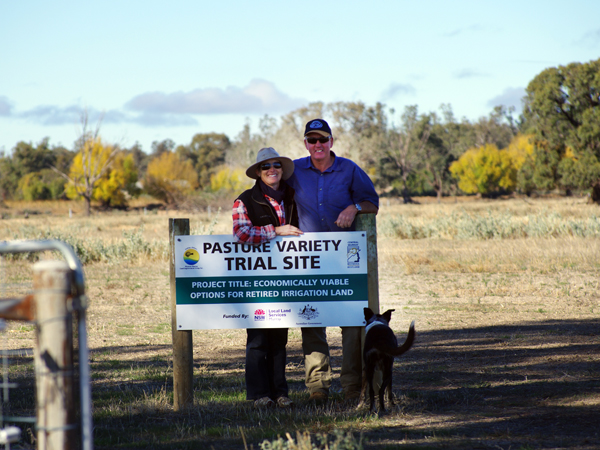Finding pasture options for retired irrigation land
A five-year research project into the use of retired irrigation land in the south-west Riverina region of New South Wales is producing findings with implications for low-rainfall zones throughout Australia.
The project, titled Economically Viable Options for Retired Irrigation Land (EVORIL), aims to help with the structural challenges faced by the community in region due to declining availability of irrigation water.
It is investigating the economic feasibility and productivity of various pasture species in previously irrigated land that has reverted to dryland.
The EVORIL project is being carried out by the Western Murray Land Improvement Group (WMLIG) and the Central Murray BestWool BestLamb Group, and supported by Murray Local Land Services and the National Landcare Programme.
The declining amount of irrigation water available for agriculture due to the water reform process has meant that large areas of land previously irrigated have reverted to dryland. Unfortunately where land levelling and soil disturbance had been high, the predominant heavy sodic soils are dominated by non-productive species such as barley grass and roly poly.

Site co-operators Tim and Tam Mulholand at their property ‘Operina’, Noorong.
Commencing in 2013, the project has now tested 44 new and existing pasture species in replicated small plot trials to evaluate production, persistence and regeneration over a range of soil types and seasons. Promising species identified in the small plot trials have been introduced into larger grazing block demonstrations to compare livestock production performance against standard district practice.
Rick Ellis, WMLIG project officer said there was still much to learn and demonstrate about species’ attributes and adaptability to local conditions.
“We need a resilient pasture mix that improves the feed quality, extends the season and maintains ground cover,” he said.“The project has wider applications across the low rainfall zones nationally.”
WMLIG project agronomist Damian Jones said preparation was imperative for successful pasture establishment.
“It shouldn’t be a spur of the moment decision to sow,” he said. “Look at weed control at least the season before you intend to establish new pastures.”
Damian said the project also examined return on investment from sowing costs.
“Don’t skimp on sowing rates,” he said. “Our variable rate sowing trials indicated that investing $70 per ha instead of $20 per ha on seed returned a net benefit of $179 per ha. The higher sowing rate also out-competed weeds more effectively resulting in additional labour and chemical savings.”
The project is gaining recognition. Dr Peter Orchard, pasture researcher with the Graham Centre for Agricultural Innovation is one expert taking notice.
“The project is unique in the range of material that is being evaluated and important for both the region and NSW in general,” he said. “We need to identify the best options with the least cost or risk to establish and expand into other areas to broaden the landscape mosaic with grasses and shrubs, including saltbush.”
Farmers have made practices changes to over 785 ha of land and intend to make changes to a further 2,540 ha. Others are still waiting for further long-term assessment on the resilience and economic feasibility of different pasture options.
Visit www.westernmurraylig.org or contact Rick Ellis on 0428 372 357.



